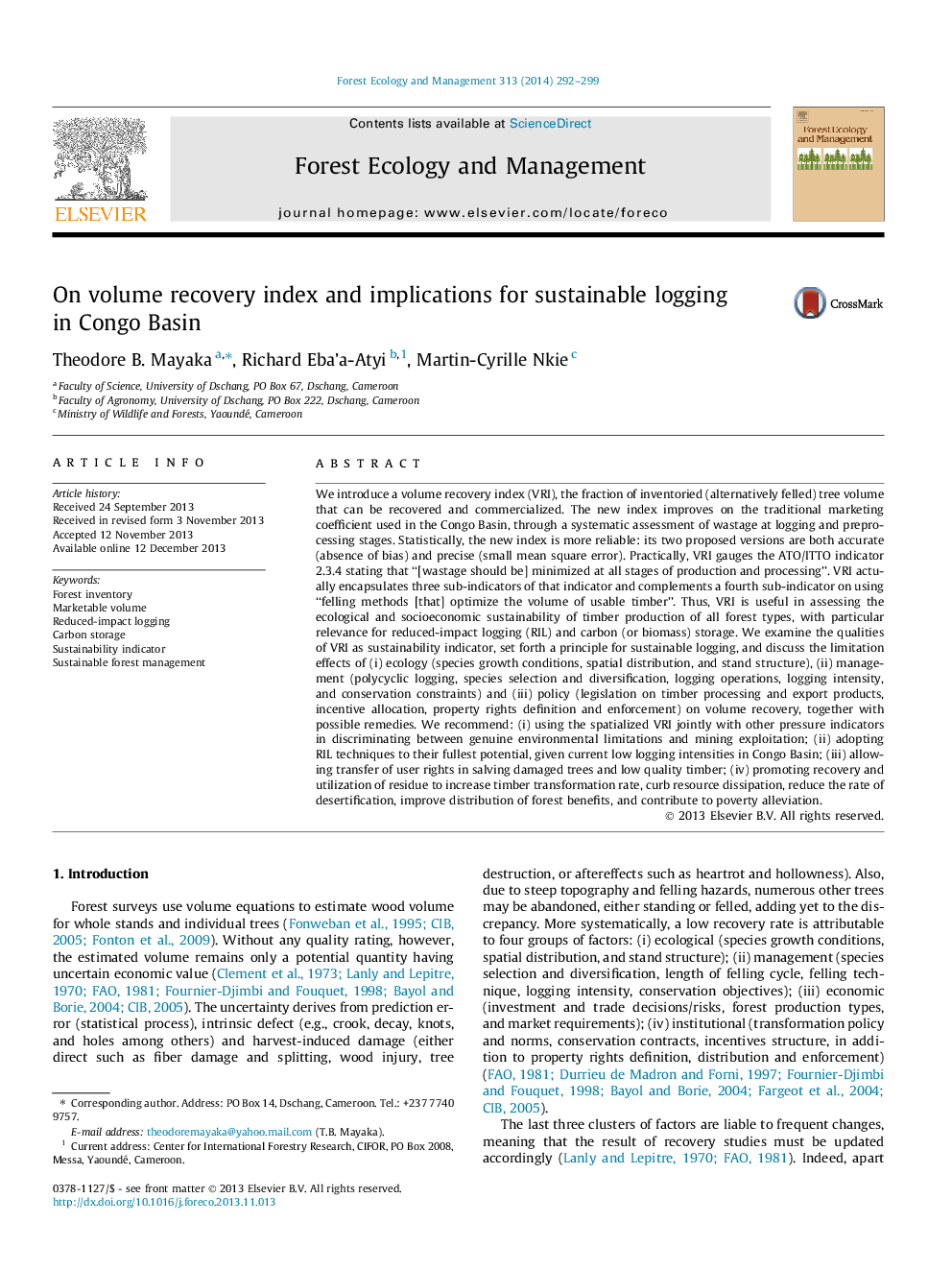| کد مقاله | کد نشریه | سال انتشار | مقاله انگلیسی | نسخه تمام متن |
|---|---|---|---|---|
| 86604 | 159199 | 2014 | 8 صفحه PDF | دانلود رایگان |
• The statistical estimation of a volume recovery index is demonstrated with data for three timber species.
• The new index is both accurate and precise, improving on the current marketing coefficient.
• The index is important for assessing the ecological and socioeconomic sustainability of logging.
• Ecological, management, economic, and policy constraints are examined for alleviation.
• The index is relevant to carbon storage studies, through its systematic tally of volume waste.
We introduce a volume recovery index (VRI), the fraction of inventoried (alternatively felled) tree volume that can be recovered and commercialized. The new index improves on the traditional marketing coefficient used in the Congo Basin, through a systematic assessment of wastage at logging and preprocessing stages. Statistically, the new index is more reliable: its two proposed versions are both accurate (absence of bias) and precise (small mean square error). Practically, VRI gauges the ATO/ITTO indicator 2.3.4 stating that “[wastage should be] minimized at all stages of production and processing”. VRI actually encapsulates three sub-indicators of that indicator and complements a fourth sub-indicator on using “felling methods [that] optimize the volume of usable timber”. Thus, VRI is useful in assessing the ecological and socioeconomic sustainability of timber production of all forest types, with particular relevance for reduced-impact logging (RIL) and carbon (or biomass) storage. We examine the qualities of VRI as sustainability indicator, set forth a principle for sustainable logging, and discuss the limitation effects of (i) ecology (species growth conditions, spatial distribution, and stand structure), (ii) management (polycyclic logging, species selection and diversification, logging operations, logging intensity, and conservation constraints) and (iii) policy (legislation on timber processing and export products, incentive allocation, property rights definition and enforcement) on volume recovery, together with possible remedies. We recommend: (i) using the spatialized VRI jointly with other pressure indicators in discriminating between genuine environmental limitations and mining exploitation; (ii) adopting RIL techniques to their fullest potential, given current low logging intensities in Congo Basin; (iii) allowing transfer of user rights in salving damaged trees and low quality timber; (iv) promoting recovery and utilization of residue to increase timber transformation rate, curb resource dissipation, reduce the rate of desertification, improve distribution of forest benefits, and contribute to poverty alleviation.
Journal: Forest Ecology and Management - Volume 313, 1 February 2014, Pages 292–299
